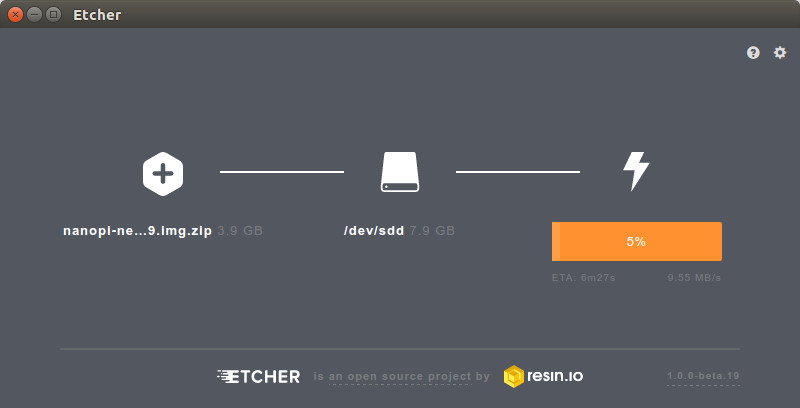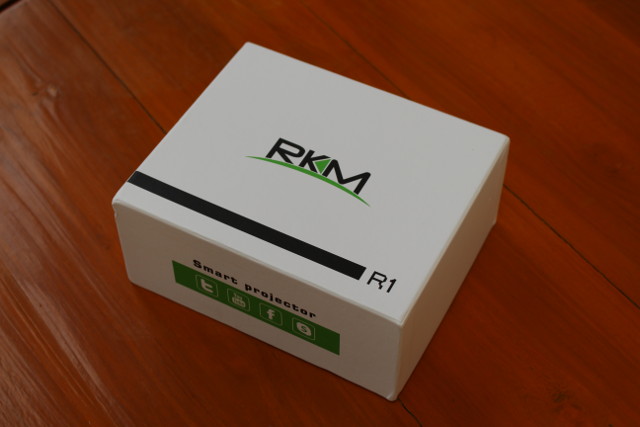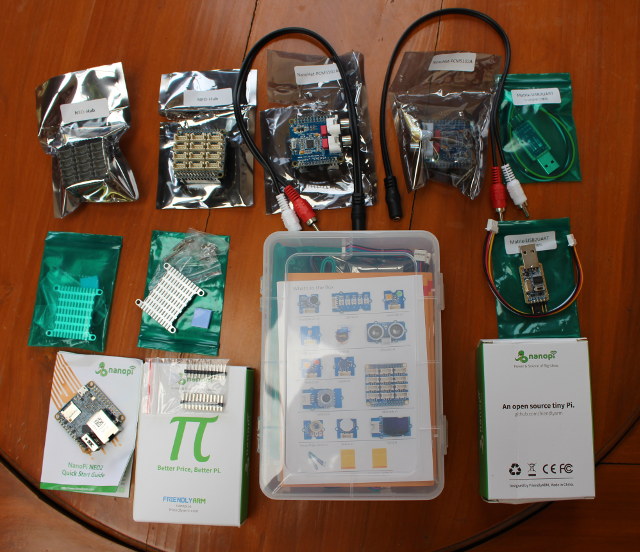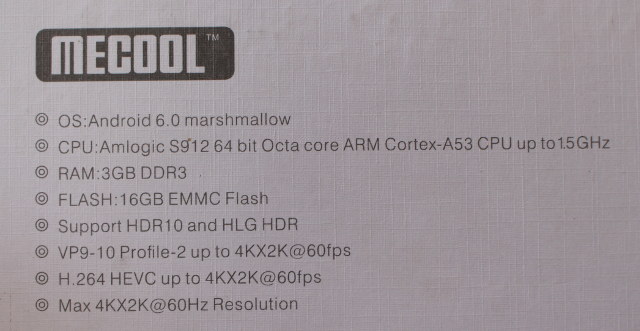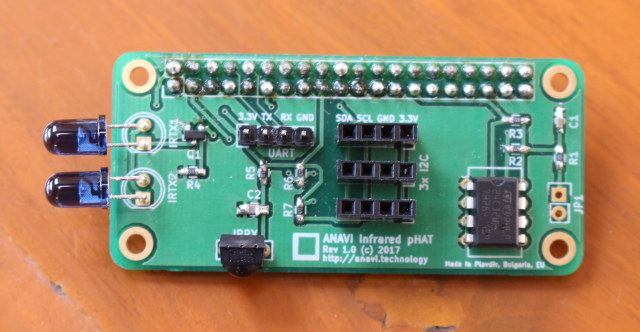I’ve received NanoPi NEO 2 boards, add-boards and sensor modules last week, where we could see how small the boards were, and how it could be suitable for IoT projects or “hardware hacking” education. Before testing the board with the add-ons, I have to select the image to run on the board, and currently we have two choices: Ubuntu 16.04.2 FriendlyELEC image with Linux 3.10 “legacy” kernel, or Armbian Ubuntu 16.04.2 Xenial nightly build with Linux 4.10 “mainline” kernel. So I decided to try both: dfssf nanopi-neo2-ubuntu-core-qte-sd4g-20170329.img.zip (296 MB) is the image from FriendlyELEC (previously FriendlyARM) Armbian_5.27.170401_Nanopineo2_Ubuntu_xenial_dev_4.10.0.7z (222 Mb) is the image from Armbian, which I downloaded on March 31st despite the filename including “170401” string You can flash the image with Win32DiskImager (Windows) or dd (linux) to a micro SD card the usual way, and while I’ve never personally had troubles with dd, I’ve been told Etcher was better, […]
MAXOAK K2 is a 50,000 mAh Power Bank Designed for Laptops, Cameras and Mobile Devices
Most of the time I receive samples by courier 3 or 4 days after the company sends it, but sometimes I’m being sent devices over airmail which may take 2 to 3 weeks, or even more. Today, I received such a parcel with no clear description on the package, and a relatively heavy blank carton box. But I remembered somebody told me they’d send a large power bank for laptops. Could it be it? Sure enough. The power bank is called MAXOAK K2, and claims to offer a 50,000 mAh capacity using a Polymer Li-on battery. All connectors and buttons can be found on one side with the DC jack, four charging/capacity LEDs, the power button, 20V/3A and 12/2.5A barrel outputs, and four USB ports with 5V/2.1A or 5V.1.0A output. Most of the laptops I’ve used were powered by 19V or 19.5V adapters, so I’m not sure it’s safe to […]
Rikomagic R1 Android Projector Review – Part 1: Unboxing and Teardown
Rikomagic R1 Android mini projector runs Android 4.4 on Rockchip RK3128 quad core processor, and the company sent me a sample for review, so today I’ll first do an unboxing, and partial teardown, before testing the projector in more details in the second part of the review. Rikomagic R1 Projector Unboxing The projector comes with a white package marked RKM R1. The bottom of the package indicated its unsurprisingly based on Texas Instruments DLP technology with a LED light, and is equipped with a touch panel and a battery. More importantly, there’s a QR code that links to R1 Setup Guide, which for once will be useful, as this device has some unique features. The projector ships with a 5V/2.5A power supply, an IR remote control, a HDMI cable, a tripod, and an adapter to make the interface between the projector box and the tripod. The top of the device […]
NanoPi NEO2 Board, NanoHats, and BakeBit Starter Kit Review – Part 1: Hardware Overview & Assembly
NanoPi NEO 2 development board is an update of NanoPi NEO with a quad core 64-bit Allwinner H5 processor + 512 MB RAM, Gigabit Ethernet, and an extra audio header, which can be a great little board for headless application since there’s no video output. FriendlyELEC ask me whether I wanted to review to board with some of their NanoHATs add-on boards, and while I asked for NanoHat PCM5102A audio board and NEO Hub which I intended to use with Grove modules from my Wio Link Started Kit, I get a bit more than expected, as the company included sets of NEO 2 boards and accessories, NanoHATs, two serial debug board, and their BakeBit Starter Kit with several Grove modules to play with. Since I have so many things to look at in this first post, I’ll just describe the hardware, assemble it, quickly check the paper documentation, and give […]
Mecool KIII Pro Hybrid STB Review – Part 2: Android Firmware, TV Center, and DVB-T2 & DVB-S2 App
Last year I reviewed K1 Plus T2 S2, an Android TV box powered by Amlogic S905 quad core processor with DVB-T2 and DVB-S2 tuner support, which worked with some caveats. VideoStrong has now send me an updated model with Amlogic S912 octa-core processor, which I presented in the post entitled Mecool KIII Pro Hybrid Android STB Review – Part 1: Specs, Unboxing and Teardown, where I listed the specifications, and showed photos of the device and the boards (main board + tuner board). I’ve now had time to play with the device, and in many respects the user experience is very similar to the one I got with KI Plus T2 S2 models, but there are also some tweaks, and a few bugs which I’ll report in the second part of the review below. KIII Pro Hybrid TV Box Setup, Settings, & Power Consumption The four USB ports are really […]
Xtream Codes IPTV Panel 2.4.2 Review – Part 4: Tutorial to Change the Main Server, Backup & Restore the Database
This is the fourth part of a review about Xtream Codes IPTV Panel, software to become your own content provider, and manage streams, clients, and resellers. The first three parts: Review of Xtream-Codes IPTV Panel Professional Edition – Part 1: Introduction, Initial Setup, Adding Streams… Xtream Codes IPTV Panel Review – Part 2: Movie Data Editing, Security, Resellers, Users and Pricing Management Xtream-Codes IPTV Panel Review – Part 3: Updates and New Features for Version 2.4.2 Main Server Change – Part 1: New Server Changing your Main Server could bring you troubles, if you do not know what you are doing. Many different reasons to change the Main server such as crashes, new one. making a Load Balancer to be a Main Server… Remember, it’s all about the existing backup, and you’ll restore your backup later, after successfully changing the Main Server. That is not difficult and everybody can do […]
Mecool KIII Pro Hybrid Android STB Review – Part 1: Specs, Unboxing and Teardown
K1 Plus T2 S2 review has been a popular post on CNX Software, as many people tried to improve their experience with the device. VideoStrong has just send an updated version of their DVB-T2 + DVB-S2 TV box with Mecool KIII Pro octa-core Hybrid STB powered by an Amlogic S912 processor combined with 3 GB RAM and 16GB storage, and the same dual tuner configuration. I’ve started the review by posting some pictures of the hardware, inside out, before reporting my experience with Android, especially the DTV part, in a few weeks. KIII Pro Specifications SoC – Amlogic S912 octa core ARM Cortex-A53 @ up to 1.5 GHz with Mali-T820MP3 GPU System Memory – 3 GB DDR3 Storage – 16GB eMMC flash + micro SD card slot up to 32GB Video Output – HDMI 2.0a up to 4K @ 60Hz with support for HDR10 and HLG, and 3.5mm AV (composite […]
How to Control Your Air Conditioner with Raspberry Pi Board and ANAVI Infrared pHAT
Leon ANAVI may be a full-time software engineer, but in his spare time he has started to develop open source hardware project with the help of others and by himself. Last year, I got hold of his RabbitMax Flex HAT for Raspberry Pi, and tested it with the provided LCD display, one temperature sensor, and a Raspberry Pi 2 board. The board also featured IR receiver & transmitter, and I tried to use it with my aircon remote control, but at the time I did not find a way to do it easily, and control my TV with LIRC instead. Leon has now made a simpler, smaller, and cheaper add-on board for Raspberry Pi Zero, and other Raspberry Pi boards with a 40-pin header, with 3x I2C headers, two IR transmitters, and one IR receiver. He sent me a sample of “ANAVI Infrared pHAT”, and after quickly describing the board, […]


